BloodRayne isn’t a series I thought I’d be writing about as a recent release. The cult franchise has developed a fandom over the years, despite an initial middling reception and three terrible movies, not to mention one of its games being practically unplayable for over a decade. Yet here we are, with fully remastered ports of the first two games in all their glory, made playable for everyone. It’s fascinating revisiting the initial duology and what can be learned with the benefit of hindsight.
BloodRayne has quite the history. Originally it started as Nocturne 2, set after the midquel Blair Witch: Rustin Parr. While still technically in the same universe, developer Terminal Reality decided against bringing back Nocturne’s dhampir Svetlana, instead introducing her implied half-sister, the titular Rayne. In BloodRayne, Terminal had a chance to start fresh under new publishing partner Majesco, a reboot in all but name. Yet BloodRayne is a quintessential Nocturne game in all the right ways — it’s campy, over the top, and willing to try any gameplay idea that might further convey the horrific nightmare world Rayne inhabits.
That’s the refreshing thing about BloodRayne. It doesn’t actually follow any given trend, instead opting to purely pursue what suits it best. So yeah, you can dual-wield almost any combination of weapons like it’s Wolfenstein, jump-kick through enemies like you’re out of The Matrix, and drain enemies to death while using them as bodyshields. Bullets won’t kill you, only blood loss, so just “borrow” some from the countless Nazis and unholy abominations you’ll sink your teeth into. You’ve also got keen senses you can trigger to slow down your perceptions, detect where your objective is, and go into a blood rage where you can slice up opponents into Killing Floor-levels of gory detail.
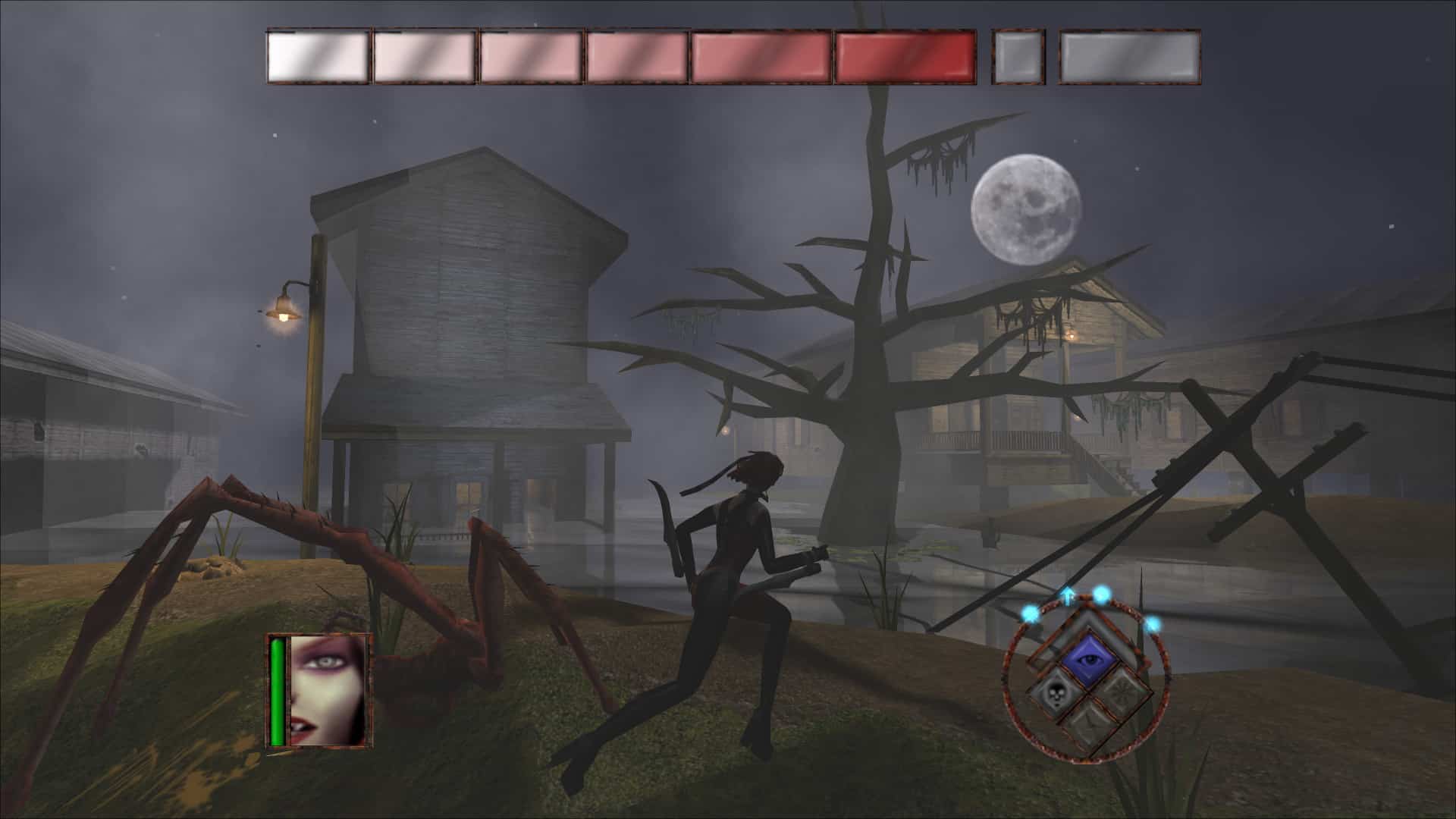
What’s incredible about all this is that BloodRayne is a genuine challenge, as well as a fantasy, with you starring as a heroic horror villain tearing through an absolutely absurd array of Nazi occultists. Your time dilation power isn’t limited — you could, in theory, play the entire game with it enabled, but it’s balanced so that you move as slowly as your opponents, incentivizing you to use it carefully. It’s best harnessed when pulling off trick shots and slipping behind heavily armed enemies so you can bite a hole in their necks. This puzzle piece utility applies to every facet of Rayne’s arsenal.
Your tracking senses not only mark the nearest officers on your hit list, but help you prioritize the weakest enemies, as they’ll turn blood red when close to death. Your senses can also highlight weak points in walls, which you can in turn smash through with your jump kick to discover additional weapons. Your default guns aren’t meant to deliver the killing blow for most enemies, but instead are a convenient way to stun enemies, with the heaviest weapons being the only ones you need to manually aim as they deal the most damage.
As a result, you swiftly start treating most armed weapons casually in BloodRayne, not obsessing about your aim unless it’s a panzerschreck or sniper rifle with a bead on a boss’s head. Grenades also demand a fair bit of skill and timing, as they aren’t thrown casually. Even the bodyshield trick is a double-edged sword, since the faster your prey dies, the less blood you’ll have to refill your health.
This all works brilliantly, presenting players with a slick, sharp toolset to operate with. The sheer expansiveness of the levels and placement of supplies hearken back to classic survival horror titles, as well as Hitman. You’re rewarded for pushing the boundaries of what can be accomplished. Maybe you can use your vampiric agility to leap high and bite a sniper’s head off, then use his rifle to clear an area ahead. You could also dash through and use each soldier as a shield to fend off the incoming fire or come around through a different route entirely.
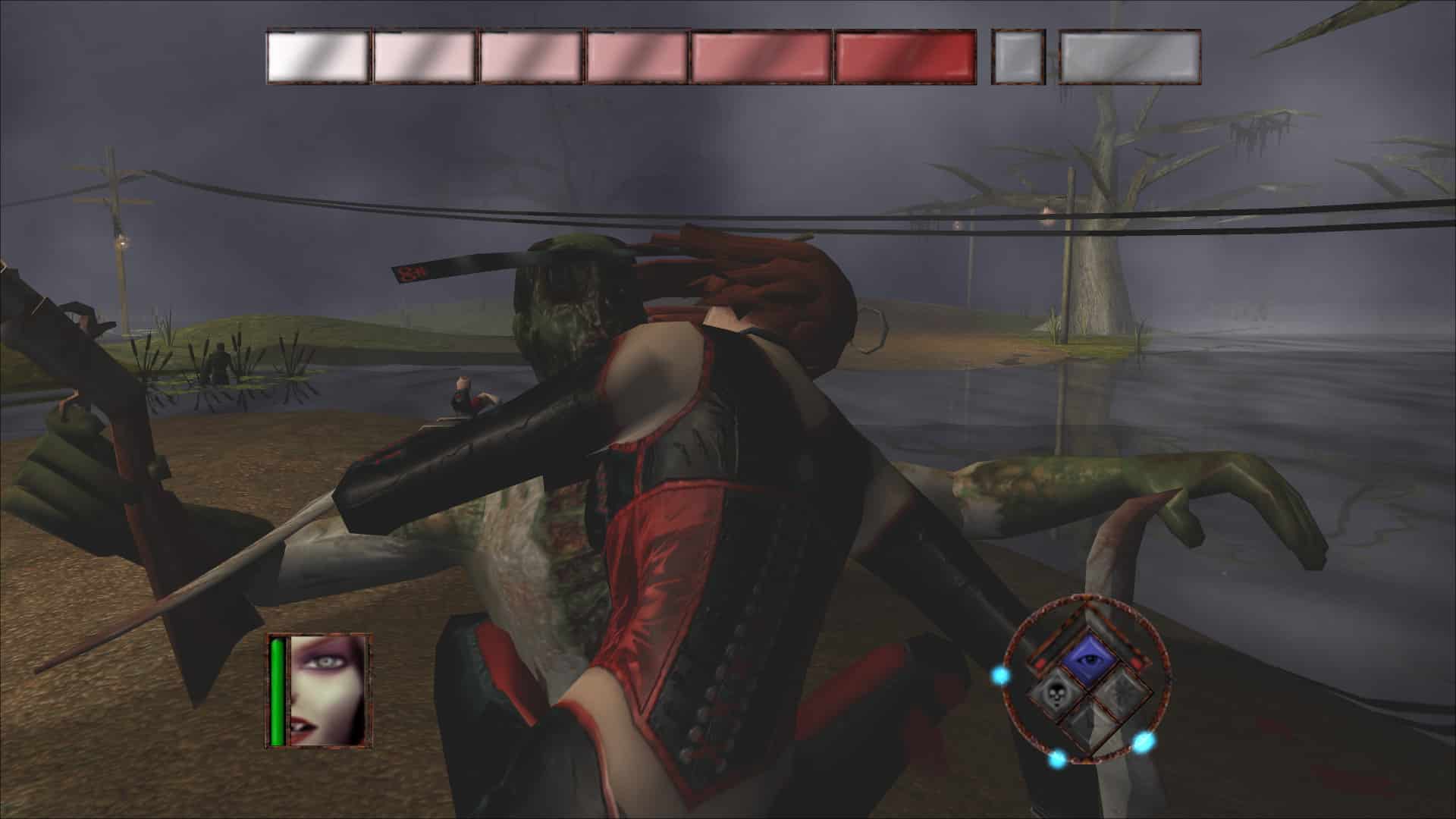
Those first hours tearing through Nazis in BloodRayne are horrifically brilliant. Rayne absolutely demolishes all of them, cleaving her way through not only regular grunts but SS troops and a variety of increasingly outlandish officers. One boss is a direct homage to one of Hellboy’s most infamous Nazi commando foes. Another is a demonic priest riding a minigun pulpit that slides around the room, pain-sharing formerly conjoined German ninja twins (yes really), and there’s even a scenario where the only way to win is by breaking the environment rather than fighting directly.
BloodRayne conveys all of this with just the right mixture of tongue-in-cheek humor and gravitas, bolstered by Laura Bailey’s pitch-perfect performance as the deadpan leading woman. Rayne’s dry sense of humor is just as sharp as her tonfa blades, making light of every delusional monster she faces. She’s genuinely intimidating but also just crass enough that she’ll happily flip off an enemy she just decapitated or offer a sarcastically pithy one-liner at her latest opponent’s demise.
While not indestructible, Rayne feels like a real apex predator — a slasher queen worthy of a proper horror movie. She’s like if Elvira, Carmilla, and Ellen Ripley were merged into a ruthless killing machine. It’s amazing stuff and begs to be updated with modern sensibilities. I could see someone like Magdalene Visaggio, Rhianna Pratchett, or Gail Simone having an absolute field day, which I hope is the case.
Of course, the first game isn’t perfect. The starting tutorial campaign is an odd diversion from the main plot, mid-level saves would be nice, and the final level is tad too intense — but there’s very little I’d change about BloodRayne. It has a brilliant sense of variety and ambitious scope. It has tightrope mantling we wouldn’t see again in a mainstream game till Infamous. It has a gauntlet of opponents I won’t spoil that far outstretch the initial Nazis and genuinely challenge you. There’s even an entire sequence of levels that are one giant fight through the innards of an unholy monster nest like in Gears of War 2. Except this game came out in 2002. That’s incredible! I could go on, but let’s address the elephant in the room: BloodRayne 2.
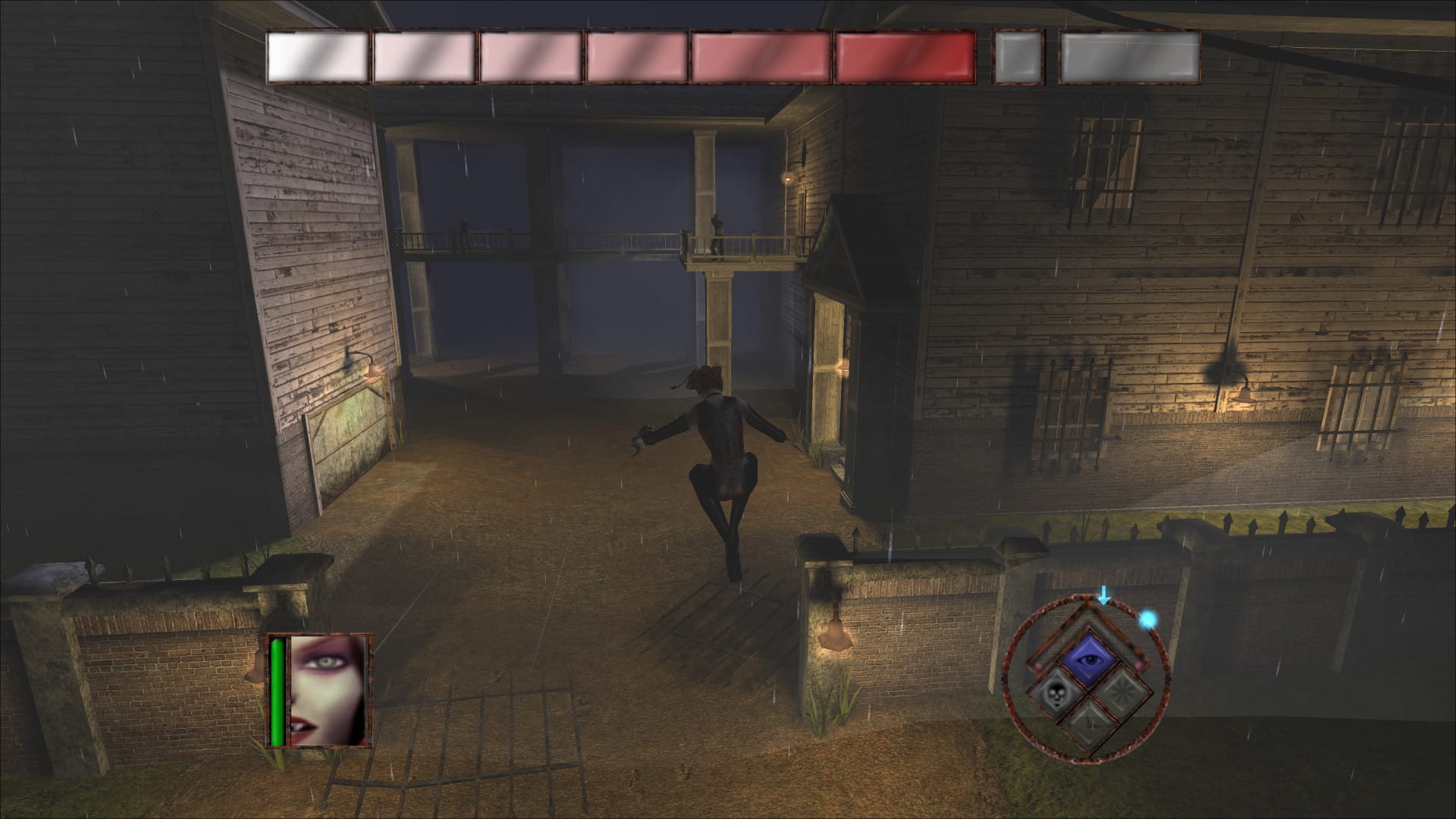
You know how I just cited how flexible, creative, and freeing BloodRayne was? How, despite being a lower-budget title, it had some seriously compelling things going for it both in terms of player expression and a cohesive focus? Yeah, BloodRayne 2 has absolutely no interest in that. If a feature isn’t cut, it’s neutered. If it isn’t neutered, it’s made redundant. If it isn’t made redundant, it probably controls worse. I’m truly stunned. It’s a gorgeous upgrade for the most part, though they oddly make Rayne’s face look far uglier despite the bump in polygons. Instead, it misses the points of its predecessor harder than even F.E.A.R. 2: Project Origin.
The horror aspect is all but lost, instead seemingly trying to emulate Devil May Cry without fully redesigning everything. Most of your vision modes are relatively useless. Your hookshot that could drag enemies in for a snack is now just for flinging them awkwardly into pointed objects strewn around the environment. Spectacle in general is the focus, with a more linear take on Tomb Raider platforming rather than employing the open-ended nature of its predecessor. Levels are often a fraction of the scale they once boasted, with a single path through from beginning to end as you tear apart clones of Marilyn Manson over and over again. I mean… at least there’s a dynamic blood system? I guess?
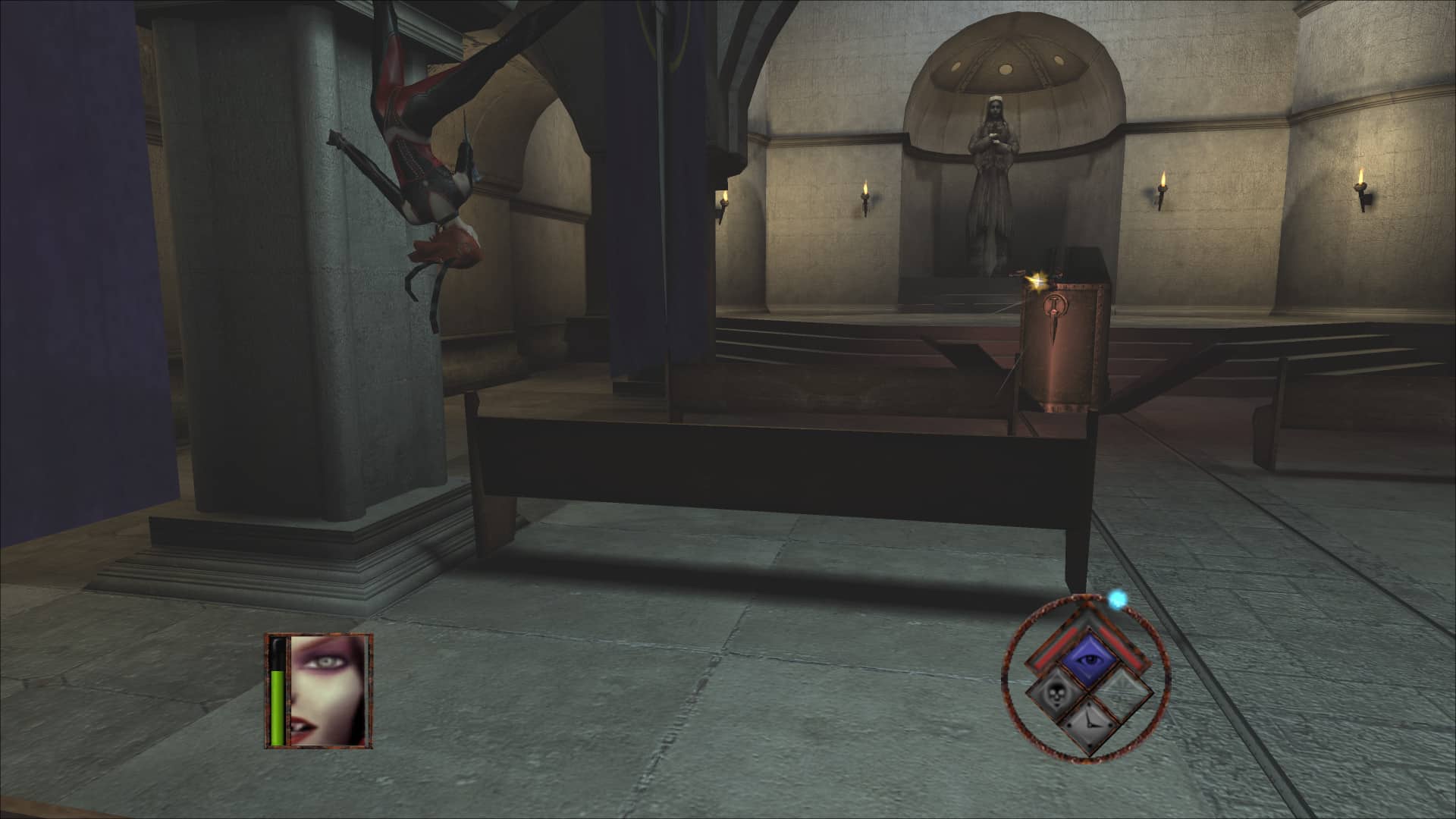
I bring this up because, for one, you don’t want to waste money on BloodRayne 2, but also because it highlights the lightning-in-a-bottle brilliance of the first game. The original didn’t desperately chase after presentation for its own sake, but instead used everything with a specific purpose. BloodRayne 2 tries in many ways to, well, honestly be a modern Naughty Dog game before those were a thing. It’s a very similar design approach — simplify, make things linear, emphasize an intangible experience rather than letting the player go wild. The problem is the story is not equipped to carry you through the journey, reading far worse than when Rayne was more focused on one-liners and chewing up Nazis.
And no one needs to talk about BloodRayne: Betrayal. Because it just doesn’t count. Aight? Aight.
While there are doubtless many directions publisher Ziggurat could take the IP now that it’s aiming to revive it, I hope it looks back to the series’s roots. BloodRayne might have its eccentricities, but it’s a remarkable game that doesn’t play by anyone else’s rules other than its own, in the same vein as Hellblade, Days Gone, and Star Wars Jedi Knight: Mysteries of the Sith. We need more games like this, especially now. For the time being, if you’re at all curious, I heartily recommend giving BloodRayne a Second Look on Steam or GOG.
And while you slay your demons, next week, it’ll be time to see if devils can cry. It’s an old ninja theory we’ll put to the test.

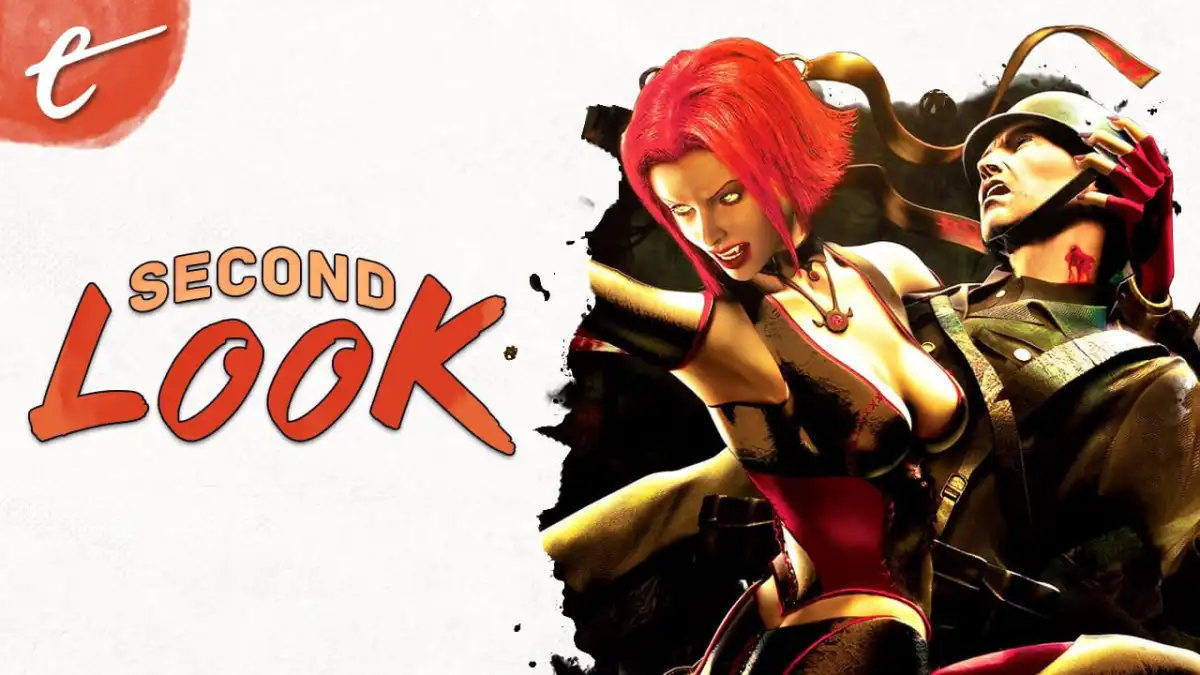




Published: Dec 3, 2020 11:00 am